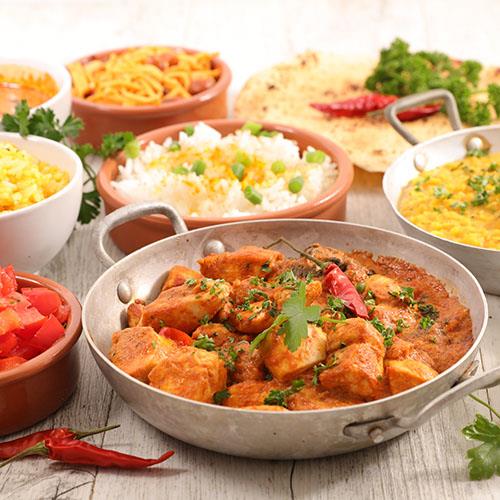
Cuisines of Europe
European cuisine (sometimes called Continental cuisine) is an amalgamation of major culinary traditions such as British, French, Spanish, Italian, Greek, and many more. Culinary traditions vary widely: from fresh seafood and bright citrus flavors to decadent cream bases and starches (think pasta, dumplings, and pastries)! It is impossible to summarize the history, variety, and impact of European cuisine in a few sentences, so explore a little more about the major cuisines below.













Cuisines of Africa & the Middle East
Africa and the Middle East have had a long influence across the world: The spices, herbs, and produce popular in these regions are coveted in many other culinary traditions. The largely Mediterranean cuisine often features fresh seafood, olives and olive oil, fruits, cheese, nuts and seeds. You may recognize some of the most popular dishes like tabouli, hummus, or baba ghanoush or ingredients such as honey, mint, sesame seeds, and figs. Open the links below to learn more!







Cuisines of Asia, the Pacific, and Oceania
Cuisines from Asia and the Pacific regions are widely varied and incredibly popular! What we tend to think of as “Asian” food is such a small representation of the rich culinary heritage from this diverse collection of countries that it seems almost criminal. With abundant spices, fresh produce, incredible meats and seafood choices alongside starchy staples, it is no wonder we all have such an affinity for the following cuisines. Read more about each below.









Cuisines of the Americas & the Caribbean
Cuisine in the Americas and the Caribbean is often thought to be largely a reflection of the countries who colonized the lands here, from Canada down to Patagonia. And while this may be partially true, the indigenous peoples of the Americas and the Caribbean had their own culinary habits influenced by geographical location and the crops and animals available to them. Common foods included corn, beans, squash, fish and meats, fruit, and nuts, and their local dishes reflected their creativity and resourcefulness using these ingredients to create mouth-watering recipes. Colonization by European and Asian countries certainly introduced new igredients and methods, but many dishes remained true to their roots while taking on a new twist.







If you somehow didn’t quite get your fill from the pages above, perhaps you would like to explore even more? Check out the links below to discover our favorite foodie cities or find suggestions to finish off your meal with coffee, tea, chocolate, and confections!


